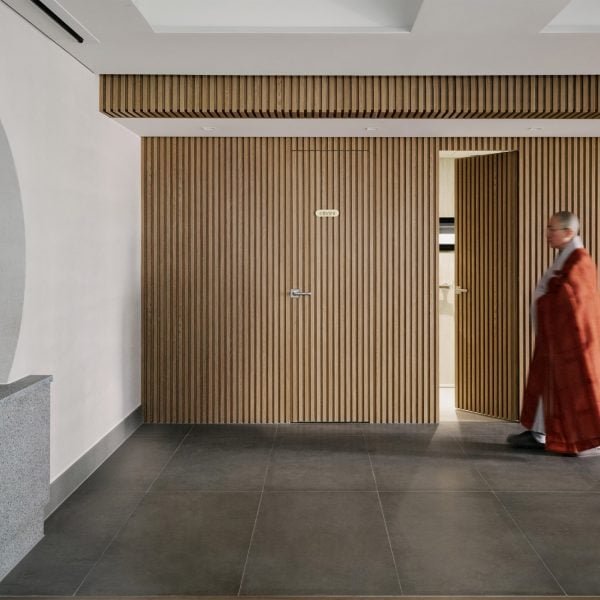Architecture firm Design by 83 combined traditional elements with contemporary forms and finishes when designing this Buddhist temple and educational space in Busan, South Korea.
The Fuhyon Buddhist Meditation Center was established as an urban outpost of the Fuhyon Zenmon Temple, located in the mountains of South Gyeongsang Province, an area difficult to access for many devotees.
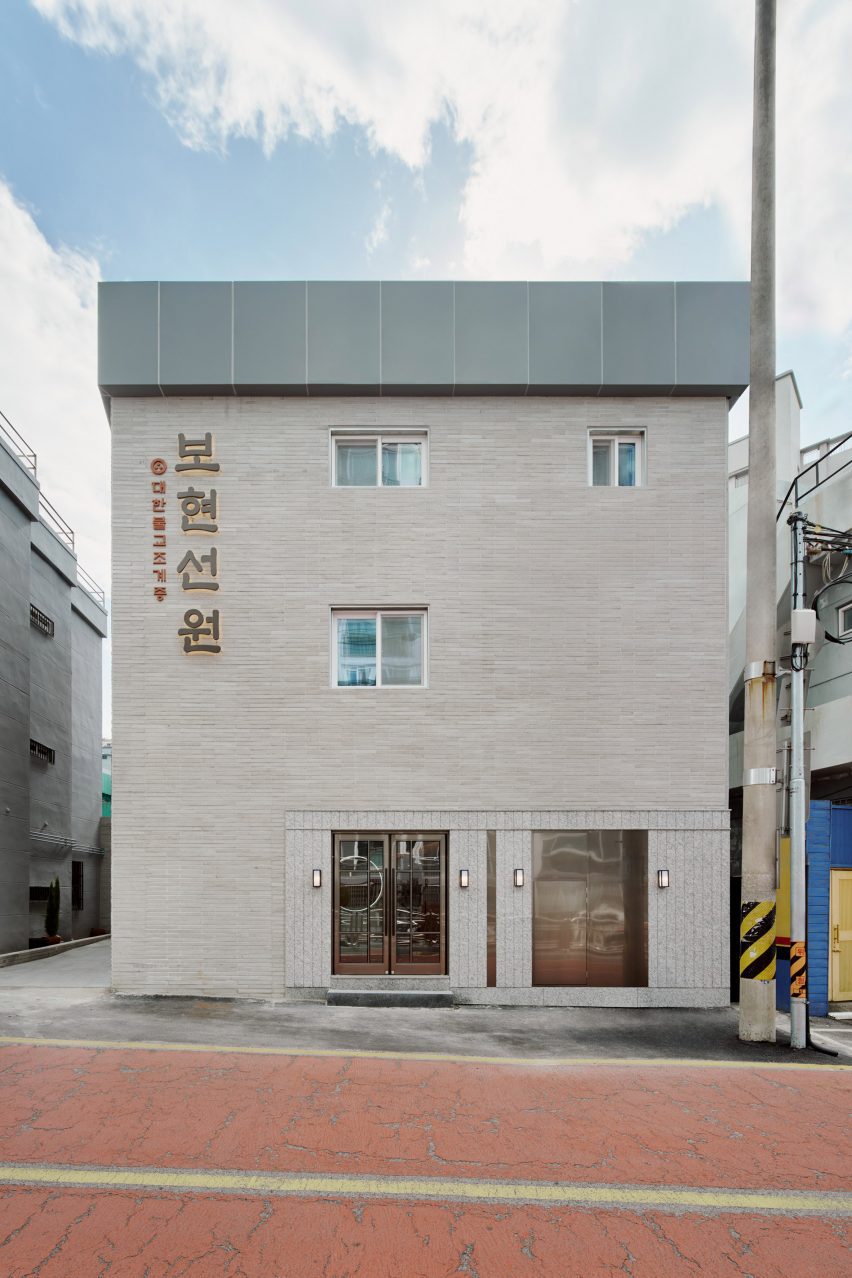
Design by 83 was tasked with creating a facility that would include a religious shrine, as well as space for Buddhist teaching and housing for two bhikkhunis.
The studio aimed to introduce a contemporary design language appropriate for an urban environment while still referencing Korea’s architectural history.
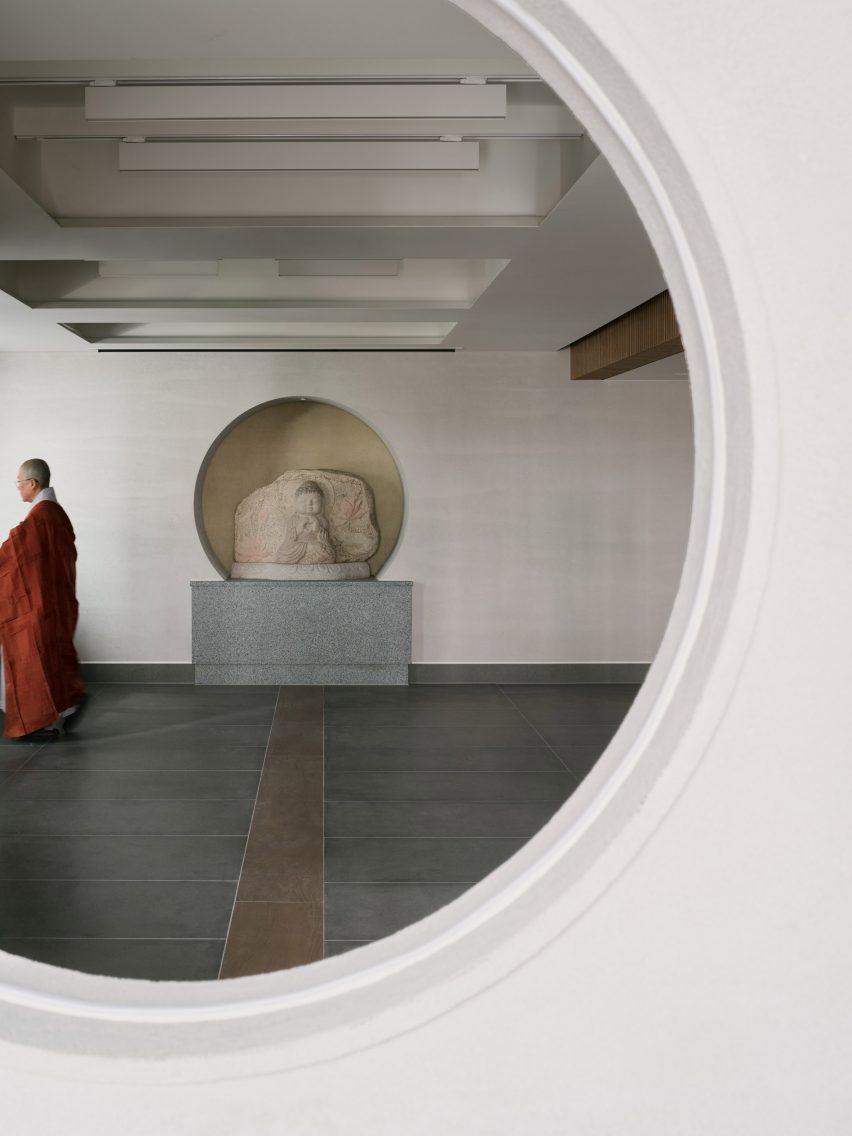
The building features clean lines, carefully placed windows and a simple mix of materials that are reminiscent of traditional temple architecture.
“The exterior retains the classic image of a temple built in the traditional East Asian wooden architecture, but with a modern twist by using metal materials for the windows and doors that mimic the color of wood,” the architects noted.
“It’s finished in monolithic tile and granite, giving it a simple, contemporary look without any fancy embellishments.”
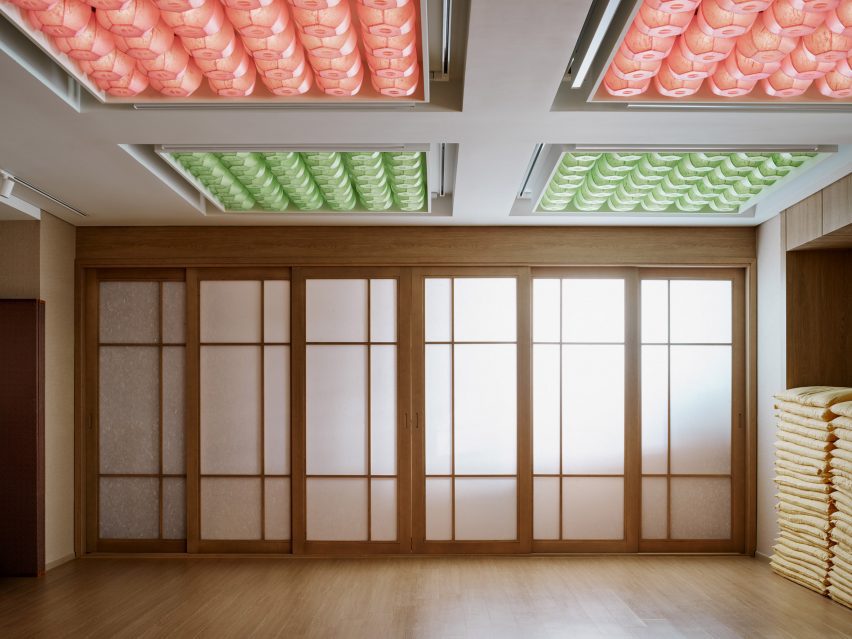
The basement contains a dining hall for monks and worshippers, with a simple décor that combines traditional wooden window frames with modern grey tiles.
As soon as you enter from the street you come across a wall with a circular opening, through which you can admire a statue of Buddha in an identical circular niche.
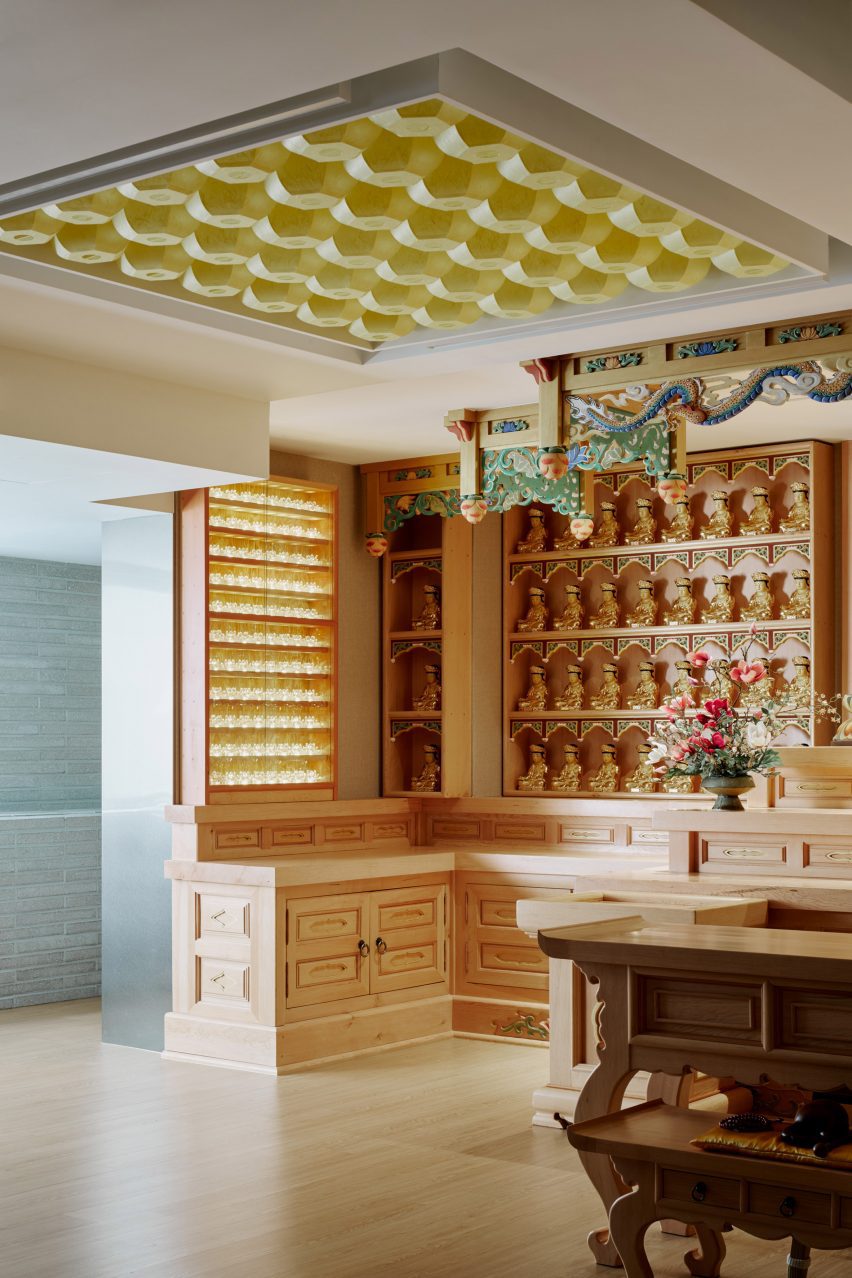
There is a reception desk to the right of the entrance, and the main space is used as an education area.
Walls covered with vertical wood panels conceal doors to service spaces such as storerooms and toilets.
The main hall on the first floor was designed in collaboration with a master carpenter who specializes in traditional Korean hanok architecture.
The space is decorated with an altar dedicated to the Buddha, matching furniture, and an intricate mural called a taiko drum.
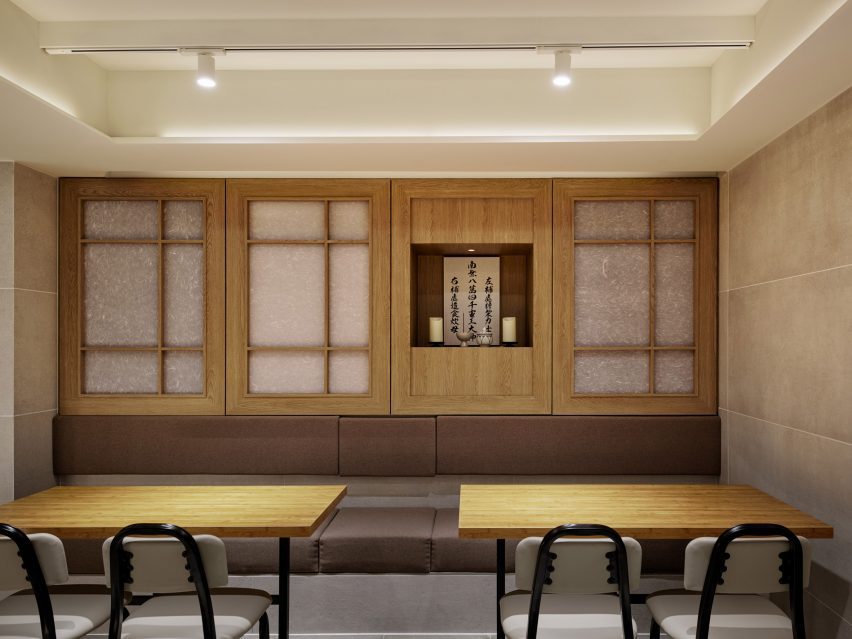
The ceiling of the hall has recesses filled with colorful lanterns, on which devotees hang their names and make wishes.
“The prayer lanterns are designed to be easily removed at regular intervals, reflecting the concept of creating something new from the old,” Design by 83 said.
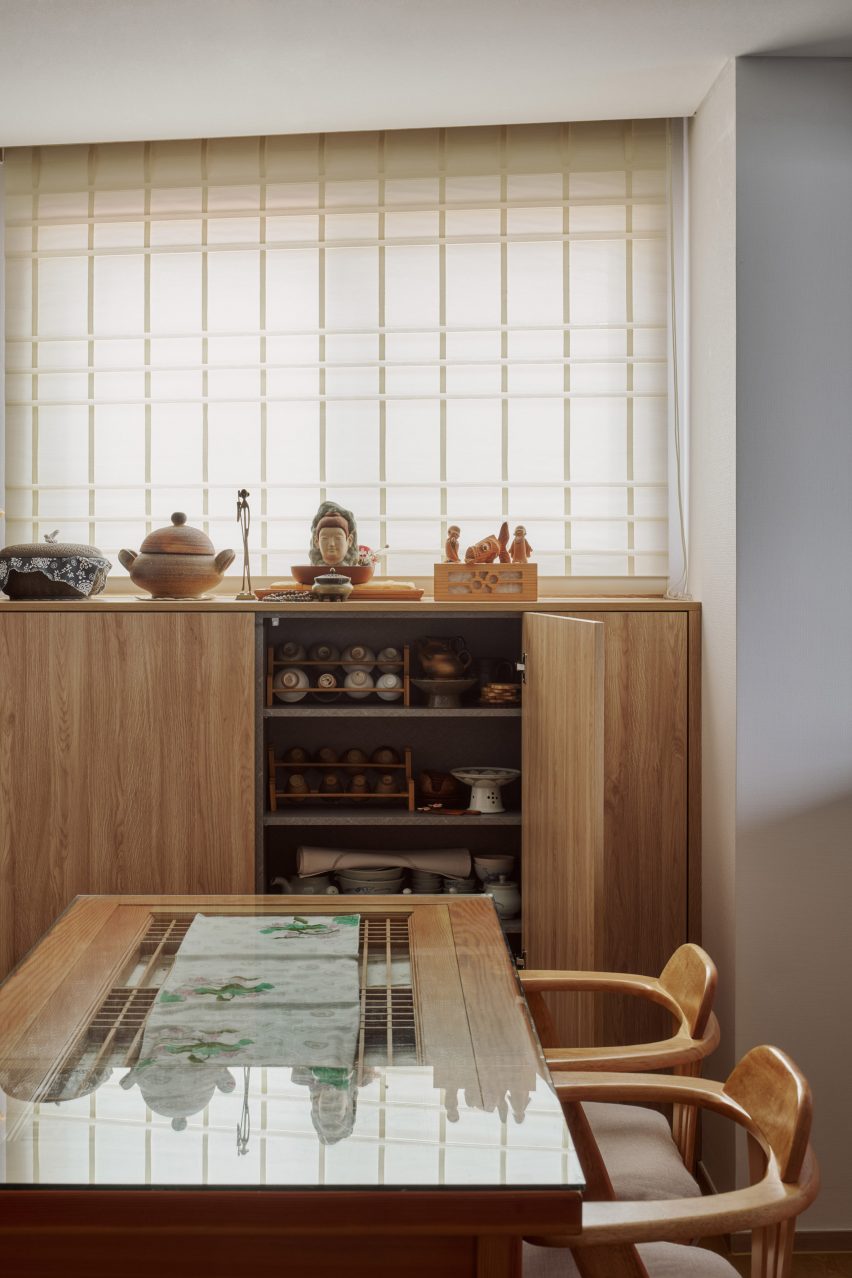
Behind traditional Korean sliding doors lining one side of the room is a small kitchen area where snacks can be prepared.
A simple brick staircase leads to the second floor living quarters, which are purposefully minimalist in design to provide a comfortable and calming environment for the two monks who live there.
Other Buddhist temples recently featured on Dezen include one built into a valley next to the remains of the Great Wall of China, and a stepped concrete temple in Tokyo.
Photo courtesy of Design by 83.

